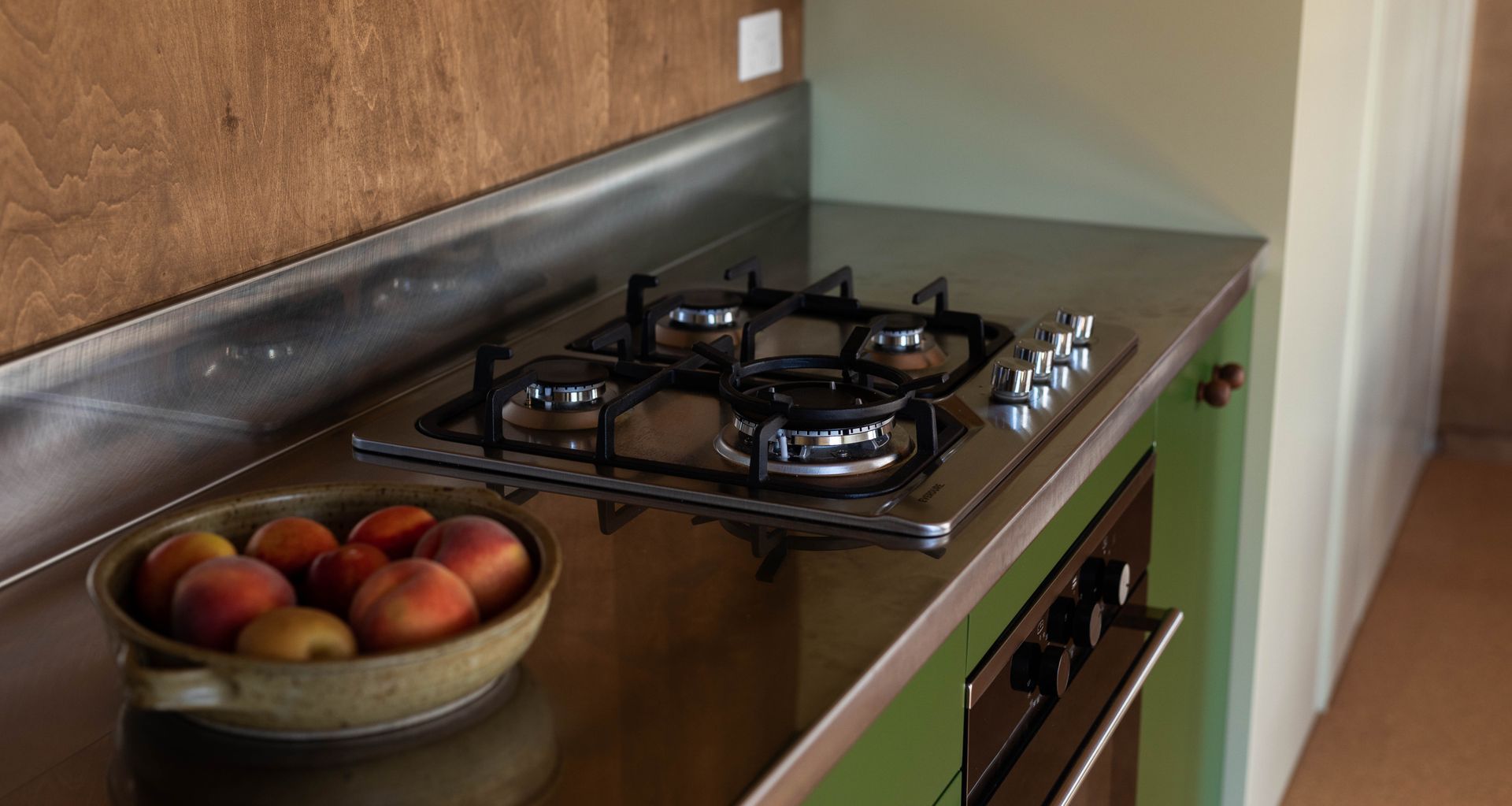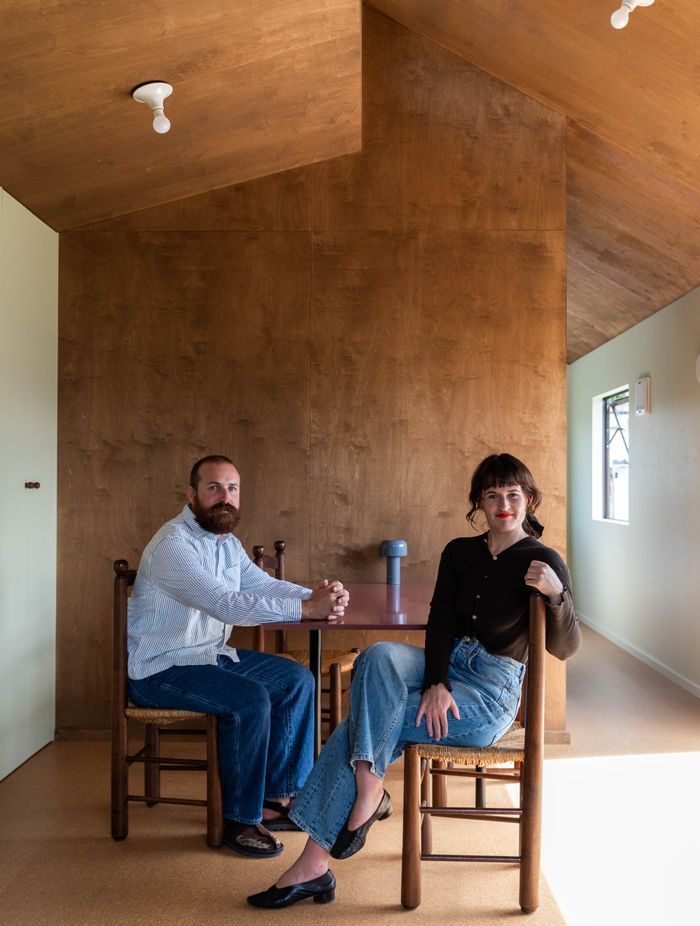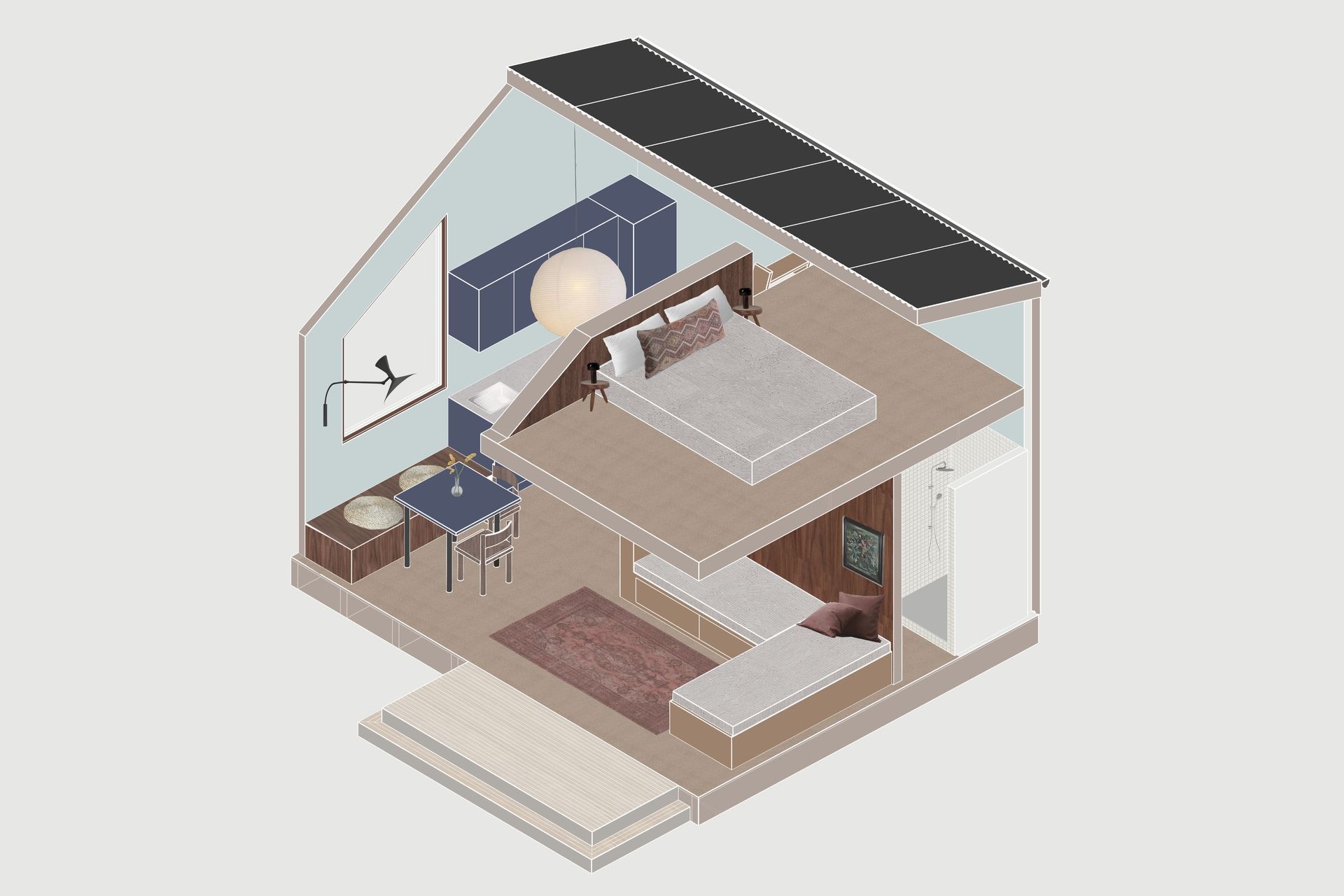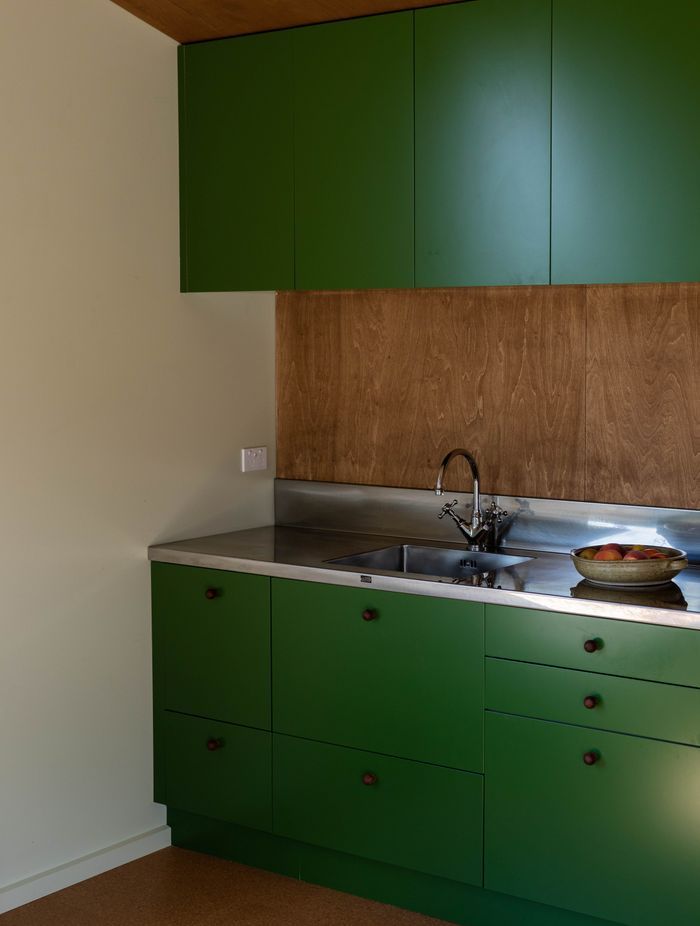Homewerk cabins: the beauty of living small
Written by
21 August 2023
•
4 min read

In the summer of 2022, husband and wife duo Sammy Scapens and Oliver Starr started work on their small home project. Amid the hustle and bustle of family life, juggling two young children and their respective full-time jobs, Scapens and Starr spent a year developing Homewerk cabins alongside friend and architect Sarah Stuart.
“We had been busy working on character renovations and shop fitouts, spending hours on fiddly jobs that didn’t deliver much return. Taking a step back to look at what we were doing and how we were working, we decided we needed to streamline the business,” Scapens explains.
“We had noticed that our favourite jobs were the ones where clients committed to our design and build concept, as opposed to when they picked bits out of it. And we were also interested in ways we could make building a home more financially achievable, sustainable, and community oriented.”


With three core floor plans — Cabin Petite, Cabin Originale, and Cabin Double — and a curated selection of cladding, flooring, lighting, and colour options, Homewerk’s offering certainly streamlines the build process for all involved.
Floor plans and interior spaces are designed predominantly by Scapens and Stuart, with Starr providing a builder’s perspective where necessary. “Sarah and I have been friends for many years and we work really well together. She brings so much experience and knowledge to the table, and we love collaborating on the Homewerk Small Homes,” Scapens says.
“In terms of design inspiration, we reference lots of 1960s and 1970s Aotearoa architects like John Scott et al. We love the really functional materials of this era, like stainless bench tops and cork flooring. We are also interested in new, innovative building materials, and are hoping to incorporate more variety into our designs as we grow and evolve.”
The material palette is informed by price as much as aesthetics, as a key tenet for the Homewerk Small Homes project is affordability. All the built-in furniture is lacquered, using colour like a material to create interesting yet durable surfaces. Other materials were chosen for simplicity and functionality due to the versatility of use the cabins will have. Scapens and Stuart have selected three colour schemes, taking direction from colour theory to create the best combinations.
“The way colour inhabits a space and the mind of its occupants was of particular interest. How would people feel in an all green space or a blue space or a beautiful clayware space? We wanted the homes to wrap around their inhabitants and create a really strong feeling. That’s why we haven’t used white in any of the three colourway options.”



There is a bit of leeway for customisation by the client, Scapens says. “We cater to small changes, such as the adding of extra windows and doors; buyers can pick their cladding colours, interior colourways, and fittings. We don’t do customisable floor plans, though. That feels a little beside the point.”
Sustainability sits at the forefront of the design and build process, however, conscious that there are a few unsustainable materials in use, the team are focussed on choosing products that have as little impact as possible. This means choosing non-toxic glues and paints, minimising off-cuts, and re-using materials on site.
Overall, the process — from purchasing the cabin to arrival on site — takes around three to four months. Scapens and Starr have designed the operation to be as simple as possible, with the most complex part being walking the clients through the finishes selection process, and organising site works such as the foundations and services consent. Once completed, the cabins are delivered to site on a hiab, and then craned onto their foundations. If the owners plans change in the future, the cabins can be relocated, too.



So far, Homewerk have completed two cabins, with many more currently underway. Future plans for Homewerk include a small home accessories store that will stock hand-selected items such as chairs, cutlery, lamps, rugs, and toilet roll holders. Scapens says they will add more floor plans to the roster eventually, but for now, three is easy.
“We are not trying to be a huge machine, so keeping things simple for us also keeps it simple for our clients. It’s much more holistic that way.”
Learn more about Homewerk Small Cabins.